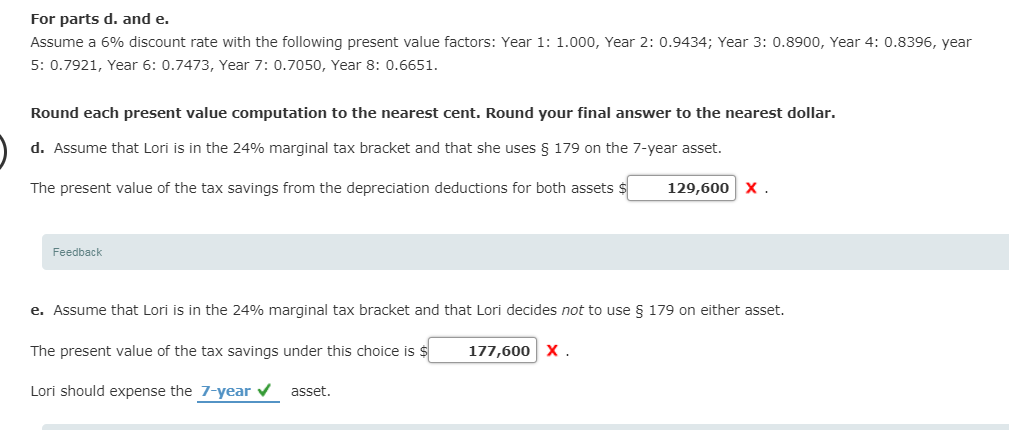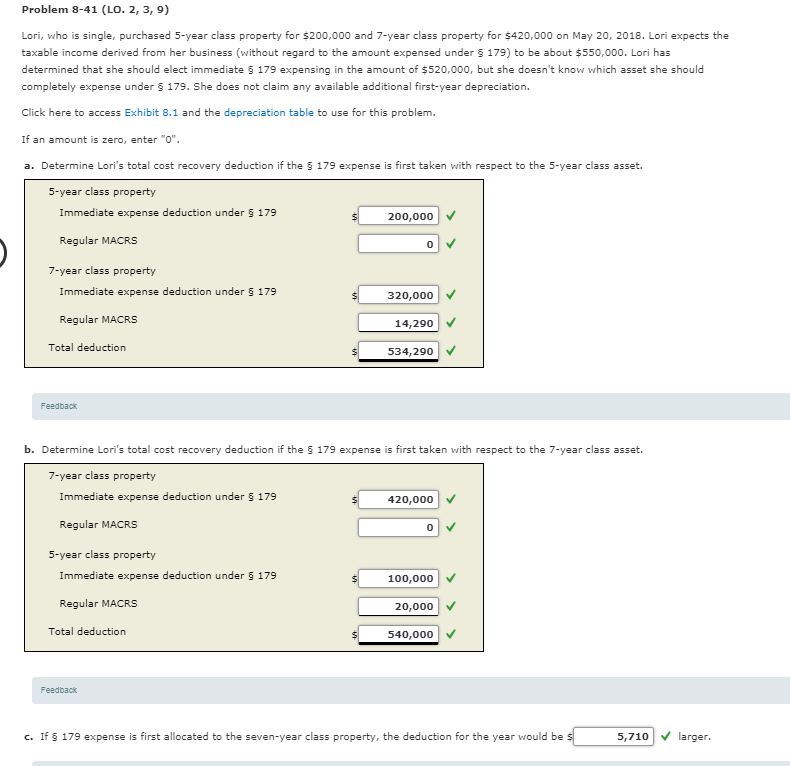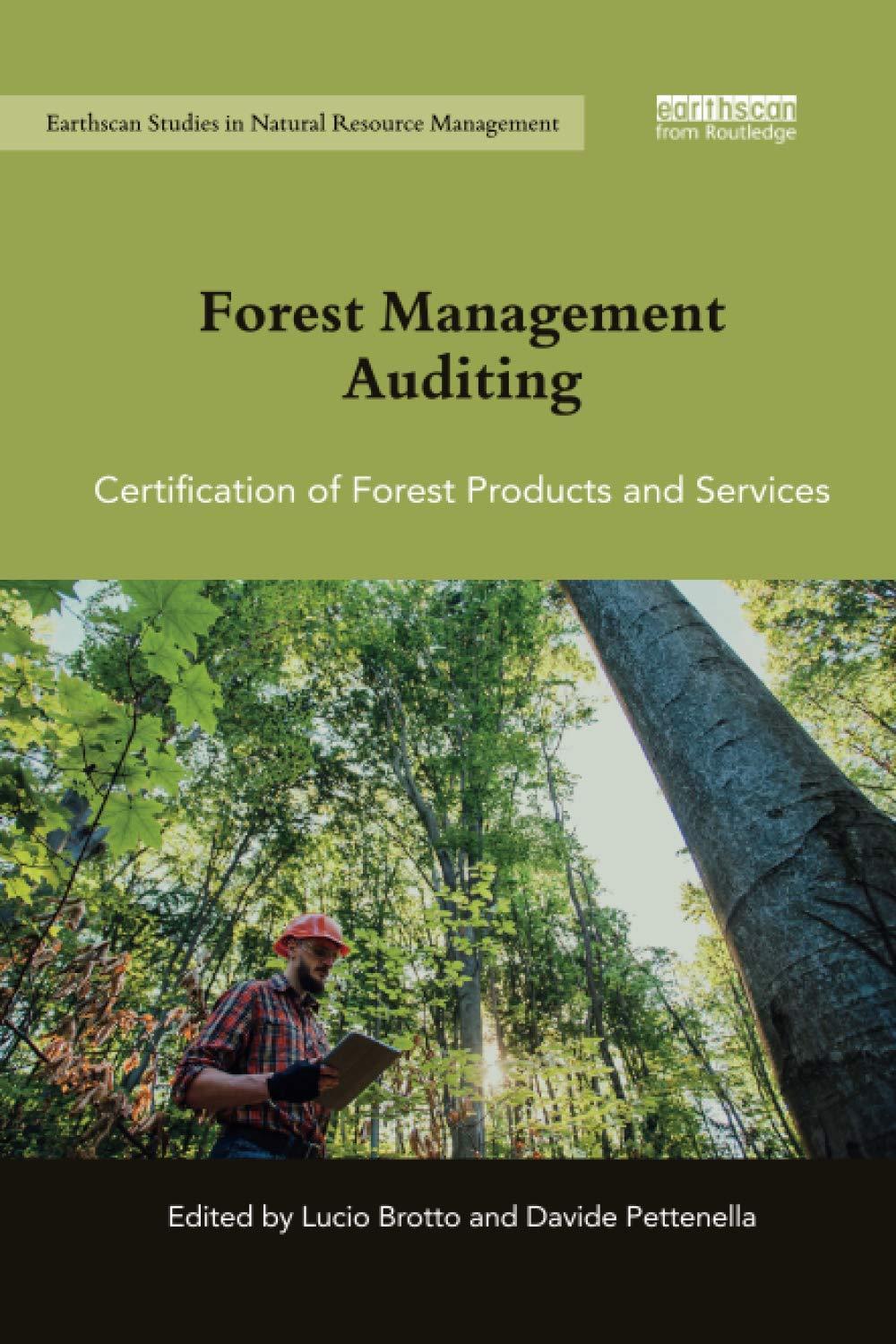Question
Problem 8-41 (LO. 2, 3, 9) Lori, who is single, purchased 5-year class property for $200,000 and 7-year class property for $420,000 on May 20,
Problem 8-41 (LO. 2, 3, 9)
Lori, who is single, purchased 5-year class property for $200,000 and 7-year class property for $420,000 on May 20, 2018. Lori expects the taxable income derived from her business (without regard to the amount expensed under 179) to be about $550,000. Lori has determined that she should elect immediate 179 expensing in the amount of $520,000, but she doesn't know which asset she should completely expense under 179. She does not claim any available additional first-year depreciation.
Click here to access Exhibit 8.1 and the depreciation table to use for this problem.
If an amount is zero, enter "0".
a. Determine Lori's total cost recovery deduction if the 179 expense is first taken with respect to the 5-year class asset.
| |||||||||||||||||||||
Feedback
Under the modified accelerated cost recovery system (MACRS), the cost of an asset is recovered over a predetermined period that is generally shorter than the useful life of the asset or the period the asset is used to produce income. MACRS provides separate cost recovery tables for realty (real property) and personalty (personal property). Write-offs are not available for land because it does not have a determinable useful life. Cost recovery allowances for real property, other than land, are based on recovery lives specified in the law. Section 179 (Election to Expense Certain Depreciable Business Assets) permits the taxpayer to elect to write off up to part of the acquisition cost of tangible personal property used in a trade or business.
b. Determine Lori's total cost recovery deduction if the 179 expense is first taken with respect to the 7-year class asset.
| |||||||||||||||||||||
Feedback
Correct
c. If 179 expense is first allocated to the seven-year class property, the deduction for the year would be $ larger.
Feedback
Correct
For parts d. and e. Assume a 6% discount rate with the following present value factors: Year 1: 1.000, Year 2: 0.9434; Year 3: 0.8900, Year 4: 0.8396, year 5: 0.7921, Year 6: 0.7473, Year 7: 0.7050, Year 8: 0.6651.
Round each present value computation to the nearest cent. Round your final answer to the nearest dollar.
d. Assume that Lori is in the 24% marginal tax bracket and that she uses 179 on the 7-year asset.
The present value of the tax savings from the depreciation deductions for both assets $.
Feedback
Incorrect
e. Assume that Lori is in the 24% marginal tax bracket and that Lori decides not to use 179 on either asset.
The present value of the tax savings under this choice is $.
Lori should expense the 7-year asset.

Step by Step Solution
There are 3 Steps involved in it
Step: 1

Get Instant Access to Expert-Tailored Solutions
See step-by-step solutions with expert insights and AI powered tools for academic success
Step: 2

Step: 3

Ace Your Homework with AI
Get the answers you need in no time with our AI-driven, step-by-step assistance
Get Started


